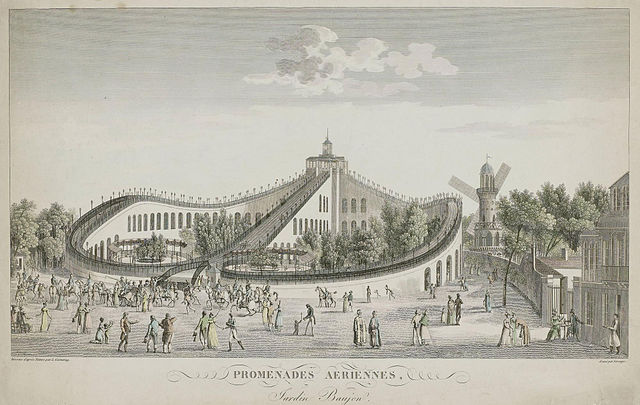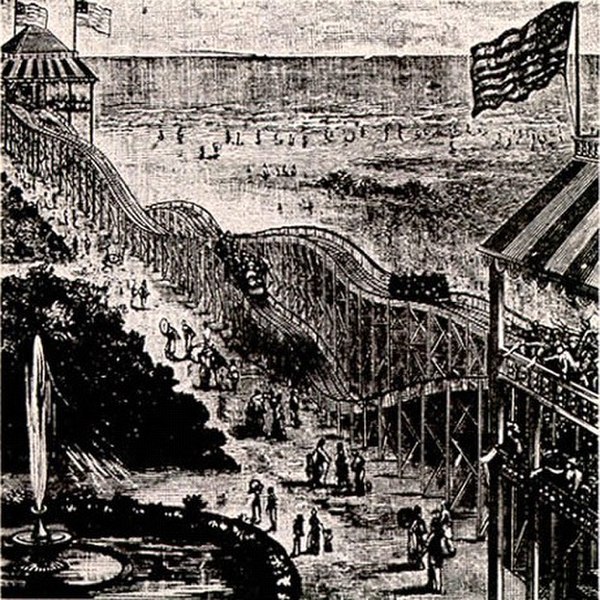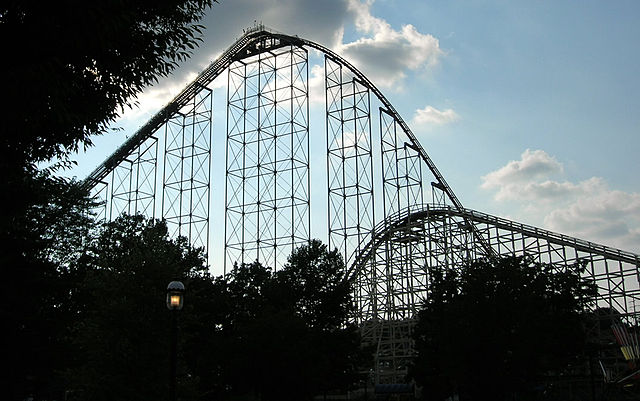A hypercoaster is a roller coaster with a height or drop measuring at least 200 feet (61 m). The term was first coined by Arrow Dynamics and Cedar Point in 1989 with the opening of the world's first hypercoaster, Magnum XL-200, which features a height of 205 feet. The next hypercoaster, Pepsi Max Big One, opened five years later at Blackpool Pleasure Beach featuring a height of 213 feet (65 m).
Goliath's first drop at Six Flags Over Georgia in Georgia.
The world's first hypercoaster, Magnum XL-200 at Cedar Point
A train in the splashdown element.
Apollo's Chariot at Busch Gardens Williamsburg, the first B&M Hyper Coaster
A roller coaster is a type of amusement ride employing a form of elevated railroad track that carries passengers on a train through tight turns, steep slopes, and other elements designed to produce a thrilling experience. Trains consist of open cars connected in a single line, and the rides are often found in theme parks around the world. Roller coasters first appeared in the 17th century, and LaMarcus Adna Thompson obtained one of the first known patents for a roller coaster design in 1885, based on the Switchback Railway which opened a year earlier at Coney Island.
The Scenic Railway at Luna Park, Melbourne, is the world's second-oldest operating roller coaster, built in 1912.
The Promenades-Aériennes in Paris, 1817
Thompson's Switchback Railway, 1884
Steel Force (left) and Thunderhawk (right), two roller coasters at Dorney Park & Wildwater Kingdom in Allentown, Pennsylvania. Steel Force is the eighth longest steel roller coaster in the world.








